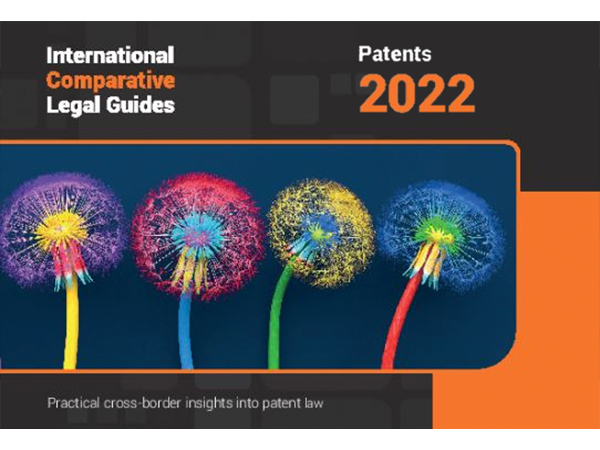
Intellectual Property
Viewpoints
Filter by:
Why You Should Use the USPTO’s Automated Interview Request (AIR) Form
March 30, 2017 | Blog | By Lisa Adams
The U.S. Patent and Trademark Office (USPTO) has launched a new Automated Interview Request (AIR) Form that allows practitioners to submit an online request for an interview with an examiner. The online form allows applicants to request an interview at any time without calling the examiner over the phone and leaving a message, which is a common practice now.
Read more
Janssen v. Celltrion, Damages: “Patent Dance” May Determine Availability of Lost Profits
March 29, 2017 | Blog | By Thomas Wintner, Joe Rutkowski
On March 2, 2017, the United States District Court for the District of Massachusetts issued an order in Janssen v. Celltrion explaining that an accused patent infringer’s failure to fully engage in the Biologics Price Competition and Innovation Act (“BPCIA”) “patent dance” information exchange process may expose the biosimilar maker to eventual infringement damages in the form of lost profits, and preclude limiting damages to a reasonable royalty.
Read more
Will 30 Years Of Practice Be Overturned? Supreme Court Hears Oral Argument In TC Heartland v. Kraft Foods.
March 29, 2017 | Blog | By Matthew Hurley, Serge Subach, Robert Moore
On Monday, March 27, 2017, the U.S. Supreme Court heard oral argument in TC Heartland v. Kraft Foods Group Brands LLC, a case that could have a profound impact on where patent infringement cases may be litigated.
Read more
The U.S. Supreme Court Hears Oral Argument in Much Anticipated Patent Exhaustion Case
March 24, 2017 | Blog | By Andrew DeVoogd
On Tuesday, the U.S. Supreme Court heard oral argument in the highly anticipated case regarding the patent exhaustion doctrine, Lexmark Int’l, Inc. v. Impression Prods., Inc., No. 15-1189.
Read more
To Seek Design Protection or Not, That is the Question!
March 24, 2017 | Blog
While design patents are gaining wider attention—thanks in part to the highly-publicized litigation involving Samsung and Apple—they still remain an underutilized form of intellectual property (IP) protection. This blog discusses the benefits of design patent protection, and what is required to obtain a design patent.
Read more
Global Dossier Expanded To More Patent Applications Around the World
March 22, 2017 | Blog | By Christina Sperry
The U.S. Patent and Trademark Office (USPTO) announced this week that the Global Dossier program has expanded to include access to more patent applications worldwide.
Read more
Federal Circuit Invalidates Claim to Generating “Financial Risk” Reports
March 21, 2017 | Blog | By Michael Van Loy, Nicholas Mouton
In the recent decision of Clarilogic v. Formfree Holdings, the Federal Circuit invalidated the patentee’s (Formfree) claim to a “computer-implemented method for providing certified financial data indicating financial risk about an individual.”
Read more
Supreme Court Shuts the Door on Patent Laches
March 21, 2017 | Blog | By Brad M Scheller
In a widely anticipated move with implications for patent litigation across the country, the Supreme Court ruled today that the equitable defense of laches is not available to limit damages in patent infringement cases subject to the six-year damages limitation of 35 U.S.C. § 286.
Read more
BPCIA Helps Amgen Gain Dismissal of Genentech Complaint
March 20, 2017 | Blog | By Thomas Wintner
Recently, the U.S. District Court of Delaware dismissed a complaint filed by Genentech under the Biologics Price Competition and Innovation Act (“BPCIA”). The complaint was filed in response to Amgen seeking FDA approval to commercialize a biosimilar version of Genentech’s cancer drug, Avastin®.
Read more
Federal Circuit Reverses PTAB’s Holding of Anticipation Despite an Element Missing from the Prior Art
March 20, 2017 | Blog | By Kongsik Kim, Peter Cuomo
On March 14, 2017, the United States Court of Appeals for the Federal Circuit clarified, in a precedential opinion, that an anticipating reference must supply all of the claim elements, regardless of what a person of skill in the art might envision when reading the reference.
Read more
Federal Circuit Reiterates That Patent Prosecution Disclaimers Must Be “Clear and Unmistakable”
March 16, 2017 | Blog | By Adam Samansky, Peter Cuomo, Joe Rutkowski
On March 3, 2017, the United States Court of Appeals for the Federal Circuit reaffirmed, in a precedential opinion, that prosecution disclaimers may only limit the scope of a claim where the disclaimer is “both clear and unmistakable to one of ordinary skill in the art.”
Read more
Failure to Explain Why Misappropriated Information is a Trade Secret May Lead to Dismissal of a DTSA Complaint With Prejudice
March 7, 2017 | Blog | By Michael Renaud, Nick Armington
A recent decision in the Western District of Kentucky highlights the importance of explaining in a complaint under the Defend Trade Secrets Act why the allegedly misappropriated information qualifies for trade secret protection.
Read more
Approaching an NDA From the Client’s Perspective – A Checklist of General Considerations
March 6, 2017 | Blog | By Thomas Wintner, Robert Moore
Nondisclosure or confidentiality agreements (NDAs) are among the most common documents attorneys draft and review for clients. They are so common, in fact, that where a client needs to execute a large number of facially distinct but substantively similar NDAs, it may make sense for the client to draft and review these documents itself.
Read more
Federal Circuit Reminds PTAB to Explain its Reasoning
March 1, 2017 | Blog | By Brad M Scheller
The Court of Appeals for the Federal Circuit (the Federal Circuit) has more recently been indicating to the Patent Trial and Appeal Board (the Board) the importance of explaining its reasoning when invalidating patent claims.
Read more
Federal Circuit Clarifies Scope of Covered Business Method Review
February 27, 2017 | Blog | By William Meunier
The Federal Circuit has further clarified the scope of the covered business method (CBM) review program under the America Invents Act (AIA), explaining in Secure Axcess, LLC. v. PNC Bank National Association that in order for patent to be a CBM patent, it is not enough that the claimed subject matter may be used in a financial activity.
Read more
The Defend Trade Secrets Act: Securing Your Trade Secrets in 2017 LIVE Webcast
February 17, 2017 | Blog | By Brad M Scheller, Christina Sperry
As regular readers of this blog will know, our cross-disciplinary Trade Secrets team has been closely monitoring the development of the Defend Trade Secrets Act (DTSA).
Read more
Software is Still Patent Eligible
February 16, 2017 | Advisory | By Michael Van Loy, Michael Renaud, Sandra Badin, Matthew Karambelas, Nicholas Mouton
In recent years, software patents have come under fire from legislation (the American Invents Act) that has generally made patents easier to invalidate, and from court decisions (the Supreme Court’s decision in Alice v. CLS Bank1 and its progeny) that have made computer-implemented inventions more vulnerable to subject matter eligibility challenges.
Read more
New Rules in the Northern District of California Aim to Encourage Patent Case Settlements
February 8, 2017 | Blog | By Michael Newman, Marguerite McConihe
New rules for patent cases in the Northern District of California will significantly affect litigation and settlement of cases in Silicon Valley’s backyard. Lawyers litigating cases in the district after the January 17, 2017 change should be wary of the new requirements that set the Northern District of California apart.
Read more
PTAB Provides A Possible Roadmap For Patent Owners To Successfully Argue Secondary Considerations Of Nonobvious
February 1, 2017 | Blog | By William Meunier
For just the third time ever, the Patent Trial and Appeals Board (“PTAB” or the “Board”) recently sided with a Patent Owner in an inter partes review (“IPR”) to find that evidence of secondary considerations of non-obviousness compelled rejection of the Petitioner’s invalidity challenges.
Read more
The DTSA and Civil Seizure Under Federal Rule of Civil Procedure 65
January 30, 2017 | Blog | By Michael Renaud, Nick Armington
The Defend Trade Secrets Act (DTSA) civil seizure mechanism provides victims of trade secret theft with a tool to immediately freeze dissemination of stolen proprietary information. Using civil seizure, a court may direct federal marshals to seize property necessary to prevent the promulgation of stolen trade secrets.
Read more
Explore Other Viewpoints:
- Antitrust
- Appellate
- Arbitration, Mediation & Alternate Dispute Resolution
- Artificial Intelligence
- Awards
- Bankruptcy & Restructuring
- California Land Use
- Class Action
- Complex Commercial Litigation
- Construction
- Consumer Product Safety
- Cross-Border Asset Recovery
- Debt Financing
- Direct Investing (M&A)
- Diversity
- EB-5 Financing
- Education & Nonprofits
- Employment
- Energy & Sustainability
- Environmental Enforcement Defense
- Environmental Law
- FDA Regulatory
- Federal Circuit Appeals
- Financial Institution Litigation
- Government Law
- Growth Equity
- Health Care
- Health Care Compliance, Fraud and Abuse, & Regulatory Counseling
- Health Care Enforcement & Investigations
- Health Care Transactions
- Health Information Privacy & Security
- IP Due Diligence
- IPRs & Other Post Grant Proceedings
- Immigration
- Insolvency & Creditor Rights Litigation
- Institutional Investor Class Action Recovery
- Insurance & Financial Services
- Insurance Consulting & Risk Management
- Insurance and Reinsurance Problem-Solving & Dispute Resolution
- Intellectual Property
- Investment Funds
- Israel
- Licensing & Technology Transactions
- Life Sciences
- Litigation & Investigations
- M&A Litigation
- ML Strategies
- Medicare, Medicaid and Commercial Coverage & Reimbursement
- Mergers & Acquisitions
- Patent Litigation
- Patent Prosecution & Strategic Counseling
- Pharmacy Benefits and PBM Contracting
- Portfolio Companies
- Privacy & Cybersecurity
- Private Client
- Private Equity
- Pro Bono
- Products Liability & Complex Tort
- Projects & Infrastructure
- Public Finance
- Real Estate Litigation
- Real Estate Transactions
- Real Estate, Construction & Infrastructure
- Retail & Consumer Products
- Securities & Capital Markets
- Securities Litigation
- Special Purpose Acquisition Company (SPACs)
- Sports & Entertainment
- Strategic IP Monetization & Licensing
- Tax
- Technology
- Technology, Communications & Media
- Technology, Communications & Media Litigation
- Trade Secrets
- Trademark & Copyright
- Trademark Litigation
- Value-Based Care
- Venture Capital & Emerging Companies
- White Collar Defense & Government Investigations
- Women's Health and Technology



